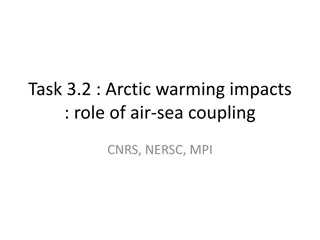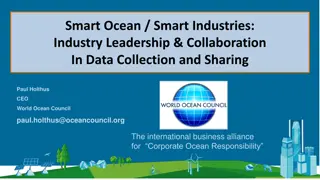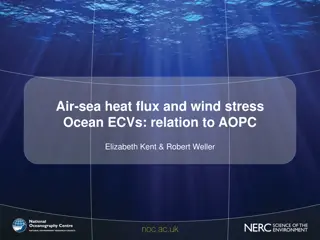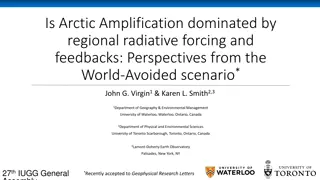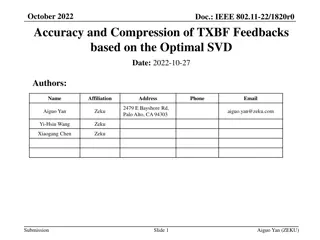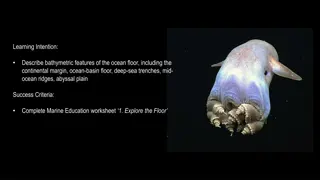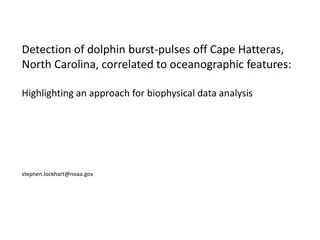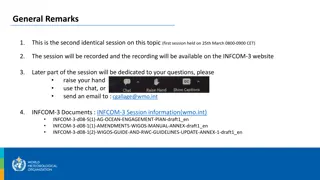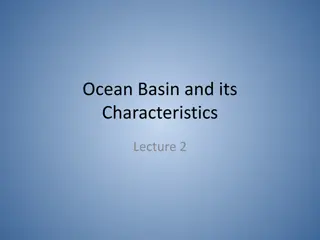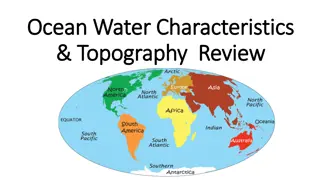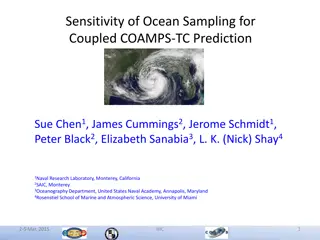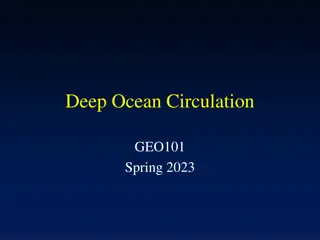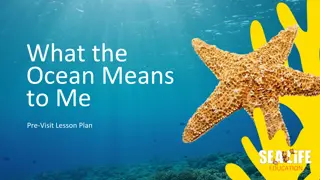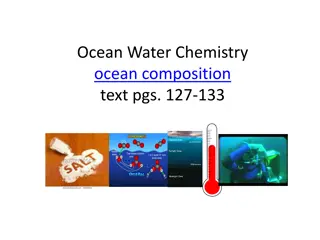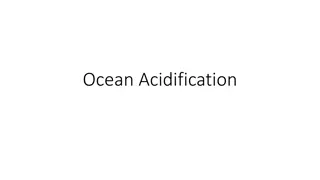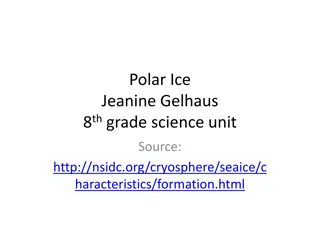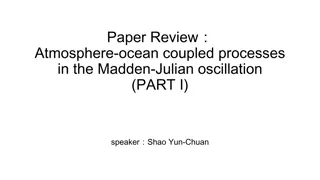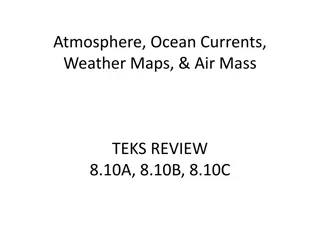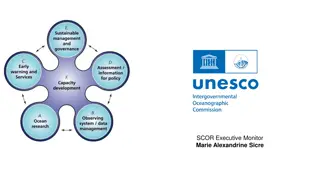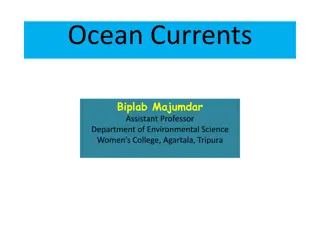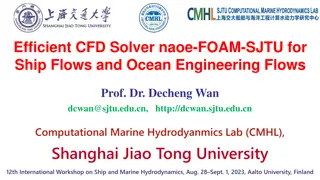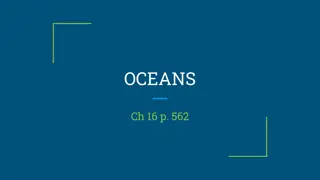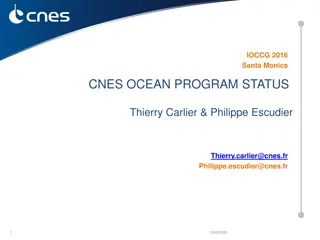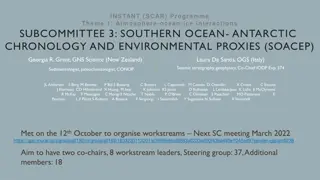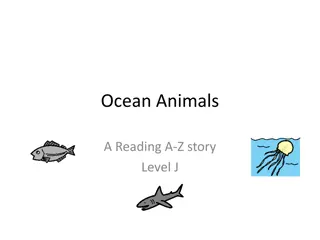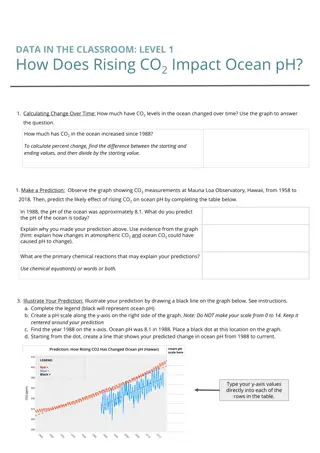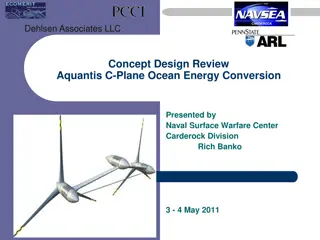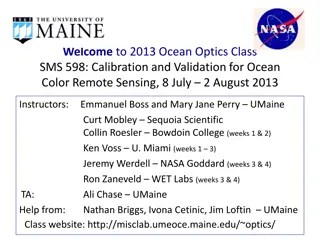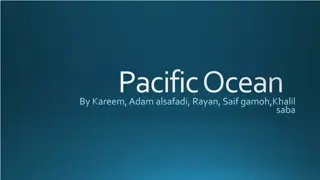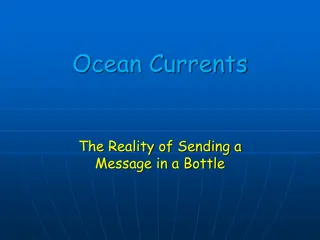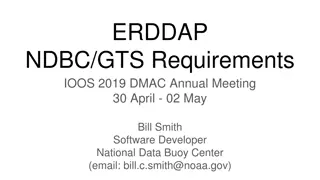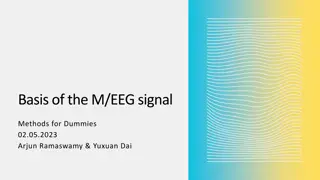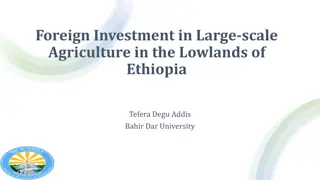Biophysical Feedbacks in the Global Ocean Research Overview
Biophysical feedbacks in the global ocean, including the impact of chlorophyll on solar radiation penetration, SST, and climate variability, are under-studied in climate models. This research assesses the effects of assimilating ocean color data and incorporating sea state in air-sea flux parameterizations on the ocean carbon cycle. The study aims to improve climate prediction and understand carbon feedbacks in the Earth system.
Uploaded on Sep 15, 2024 | 0 Views
Download Presentation

Please find below an Image/Link to download the presentation.
The content on the website is provided AS IS for your information and personal use only. It may not be sold, licensed, or shared on other websites without obtaining consent from the author. Download presentation by click this link. If you encounter any issues during the download, it is possible that the publisher has removed the file from their server.
E N D
Presentation Transcript
WP3.9: Biophysical feedbacks in the global ocean David Ford Met Office ESA UNCLASSIFIED - For Official Use
WP3.9: Biophysical feedbacks in the global ocean Chlorophyll in the ocean affects the depth of penetration of solar radiation. Alters SST, heat uptake, evaporation, sea ice. Affects ENSO variability and monsoon timing. But the process is rarely included in climate models or reanalyses. Climate Modelling User Group CMUG | 25-07-2018 | Slide 2
WP3.9: Biophysical feedbacks in the global ocean Assimilate CCI ocean colour into the ocean component (NEMO-CICE-MEDUSA) of a CMIP6 Earth System model (UKESM1). Run simulations with and without biophysical feedback, and assess consistency with CCI SST, SI, SSH, SSSal products, and in situ data (ocean heat content, carbon fluxes). Assess impact on climate variability, building on previous studies. Relevant to OMIP and WCRP Grand Challenges on Near-term Climate Prediction and Carbon Feedbacks. Climate Modelling User Group CMUG | 25-07-2018 | Slide 3
WP3.9: Biophysical feedbacks in the global ocean Air-sea CO2flux is a function of sea state. In climate models, air-sea flux parametrisations just include wind speed, not sea state. But such parameterisations have been developed. Assess the impact on ocean carbon cycle (fluxes, pH) of using such a parameterisation in NEMO-CICE-MEDUSA, forced by CCI sea state products. Requires level 4 significant wave height data (ideally daily). Climate Modelling User Group CMUG | 25-07-2018 | Slide 4
WP3.9: Biophysical feedbacks in the global ocean Ocean colour uncertainties will be used in the assimilation, other ECV uncertainties can be accounted for in validation. ECV teams will be kept in loop regarding experiments, results, and experiences of using the data. Climate Modelling User Group CMUG | 25-07-2018 | Slide 5


